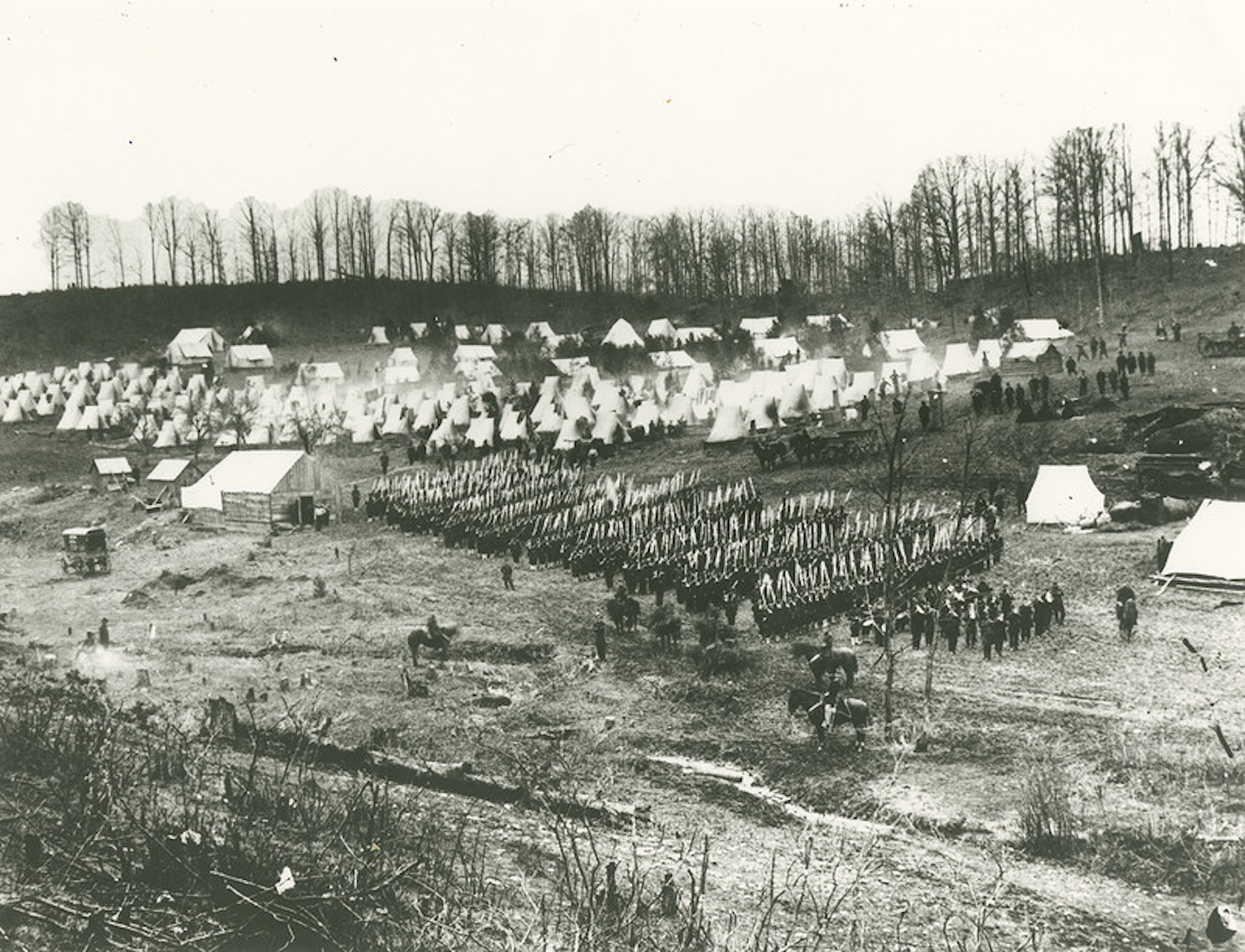 | |
| July 12 Proclamation By the Governor of | Connecticut |
The new volunteers trained for several weeks while their regiments were organized, and by mid August they were ready to depart. They mustered on August 25.
In his History of the Fifteenth Connecticut Volunteers in the War for the Defense of the Union (1893) Sheldon B. Thorpe notes:
Studied closely as a whole, no regiment was put into the field by the State of Connecticut containing so large a percentage of education, morality, and religion as was embodied in this." (p. 13)
Thorpe, who also served in the regiment, relates a story that transpired a few days before their departure the Atwater Armor Company in New Haven had made a killing selling iron plate bullet proof vests to more than two hundred soldiers. They thought them a good idea, but when they put them to use in Washington they tossed them in the Potomac River because they.were useless and too heavy.
 |
| The Long Bridge, near where I-395 now crosses |
Thorpe describes the condition on the banks of the Potomac that he describes as "poisonous marshes":
The immediate duty of the regiment at this time was the guarding of the Washington end of Long Bridge, and the commissary stores at Fort Runvon. The fort was a veritable death-trap. Situated on the great marshes bordering the Potomac, it was in the midst of a most foul and fever breeding district — the air was filled with poison, and on the unacclimated lads of the North it fastened with a deadly grip. The ague became prevalent in camp, and in a short time numbered its victims by the hundred. (pp 21-22)
It is well known that two soldiers died of disease for every one that died of battle wounds. As Thorpe notes, for New England men this was exacerbated because they did not have a built up resistance to the illnesses present in a southern climate.
 |
| 96th Pennsylvania drilling in 1861 by Mathew Brady. Source: National Archives & Records Administration. |
The rest of September was occupied with drilling and parades and reviews in Washington.
George became a part of the newly established Ambulance Corps, which was formed when the magnitude of battles became obvious, and the need was recognized for an ambulance corps to rescue wounded soldiers off a battlefield and get them to a hospital.
DAILY DUTY A. M.
Reveille. 6.00.
Surgeon's call, 6.15.
Squad drill, 6.15 to 7.15.
Breakfast, 7.15.
Guard mount, 8.00.
Officers' drill, 8.30 to 9.30.
Company drill, 9.30 to 11.00.
1st Sergeant's call, 12.00. Dinner, 12.00.
P.M.
Inspection quarters, 1.00.
Battalion drill, 2.00 to 4.00.
Dress parade, 5.30.
Supper, 6.00.
Officers' meeting, 7.30.
Tattoo, 9.00.
Taps, 9.30.
Next time, George's letter home.
No comments:
Post a Comment